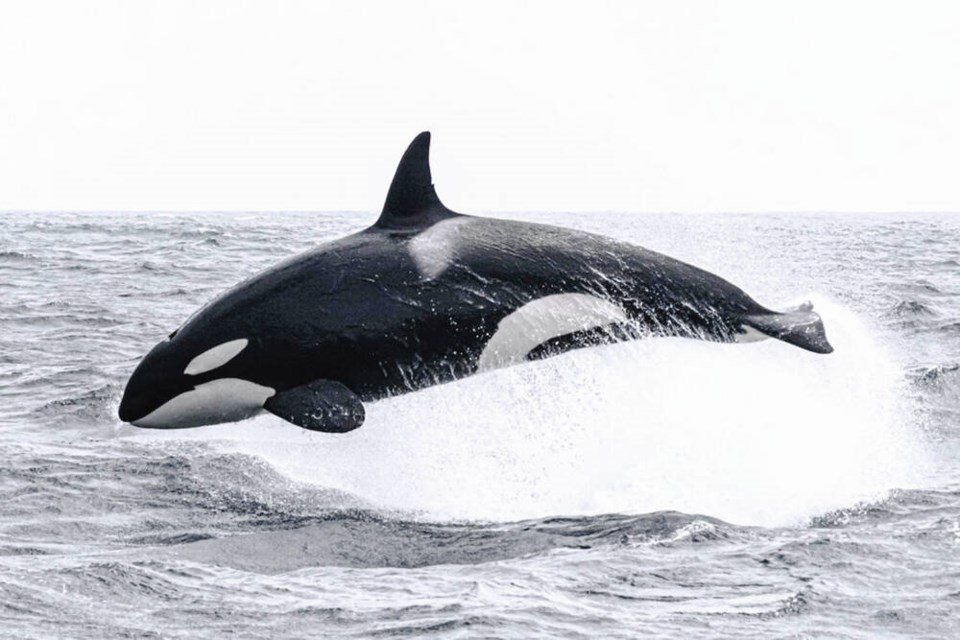Scientists have discovered distinct groups of transient orcas that prefer to hunt and live in deeper water in the eastern Pacific, including off B.C.
Joshua McInnes of the University of British Columbia’s Marine Mammal Research Unit, said 150 “outer coast” orcas have been documented over the past 13 years.
They are transients, or Bigg’s orcas, and hunt marine mammals.
But McInnes said the outer-coast orcas don’t often “hang out” or associate with the West Coast population of transients that frequent the near-shore waters of British Columbia, Washington state and southeast Alaska.
The outer coast orcas prefer the continental shelf break or the deep waters over the Monterey Submarine Canyon, he said.
It was originally thought all transient orcas between southern California and northern Alaska were a single population, but research is showing “pocket communities” of transients that spend most of their lives in deep water and rarely mix.
The study by the University of British Columbia, and the U.S.’s National Oceanic and Atmospheric Administration and Marine Life Studies says the outer coast orcas prefer habitat up to 60 kilometres off shore.
These 150 documented outer-coast orcas are usually offshore between central California and Oregon, but McInnes said 26 had been identified off British Columbia and Alaska. He photographed one in the Salish Sea in 2009.
More than 100,000 photographs of dorsal fins and saddle patches were collected between 2006 and 2018, and used to identify and number the orcas. The images were collected by whale watch ecotours, dedicated line transect surveys and marine mammal surveys in California and Oregon.
Another group has been identified in the eastern Pacific as “oceanic orcas.” There are 40 documented so far. They prefer to hunt up to 200 kilometres offshore. “We really don’t know much about these orcas,” said McInnes. “They can’t be linked to [other transients] right now.”
He noted some oceanic orcas have scars on their bodies from cookie-cutter sharks, a parasite that feeds off larger animals without killing them and leaves cookie-shaped scars. Also called the cigar shark, it lives in warm waters worldwide and has been recorded as deep as four kilometres.
“This suggests their movements are in [even] deep waters, but we don’t know where they spend most of their time,” said McInnes. “Orcas can move 100 to 200 kilometres a day, and it’s not set in stone who they hang out with.”
It is difficult to get out to the regions where they live, he said. Research vessels are expensive and the weather conditions are unpredictable.
McInnes said researchers often rely on tuna boats and bird scientists who work 200 kilometres from shore. “The open ocean is a tough place to do research,” he said.
DNA testing for oceanic orcas would be essential for comparisons with other Bigg’s populations, McInnes said. “There’s certainly more to learn.”
dkloster@timescolonist.com



